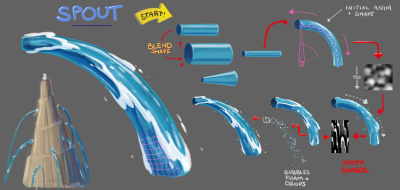Howard Wimshurst Shares Some Tips for Understanding How to Animate Water Effects
2D animator, Howard Wimshurst shares his technique for animating water that will help you create more physically plausible splash effects. Wimshurst covers the principles and techniques needed to animate a water sheet believably that you can also use for water splashes and other water effects.
Wimshurst breaks down the properties of small-scale water effects into six steps.
1. It starts with high energy directional lines
2. The water then loses directional energy, slowing down
3. It will pull itself apart, losing its coherent form
4. The water then turns into a series strings, beads, and more substantial holes
5. It will eventually fall back down, leaving some higher energy drops still in the air
6. Finally, the falling water will create secondary splashes
“The timing is what’s going to sell the splash more than anything in my experience,” Wimshurst says. “to really sell the weight of this it stays at the top for quite a while, it kind of lingers at the top and then it falls back down.”
Water and fire are essentially the same in that they can be governed with the same fluidic properties. Animating a flame has a lot of the same principles. Wimshurst is animating with Adobe Animate (Flash) but the techniques here are very helpful no matter where you choose to work.






